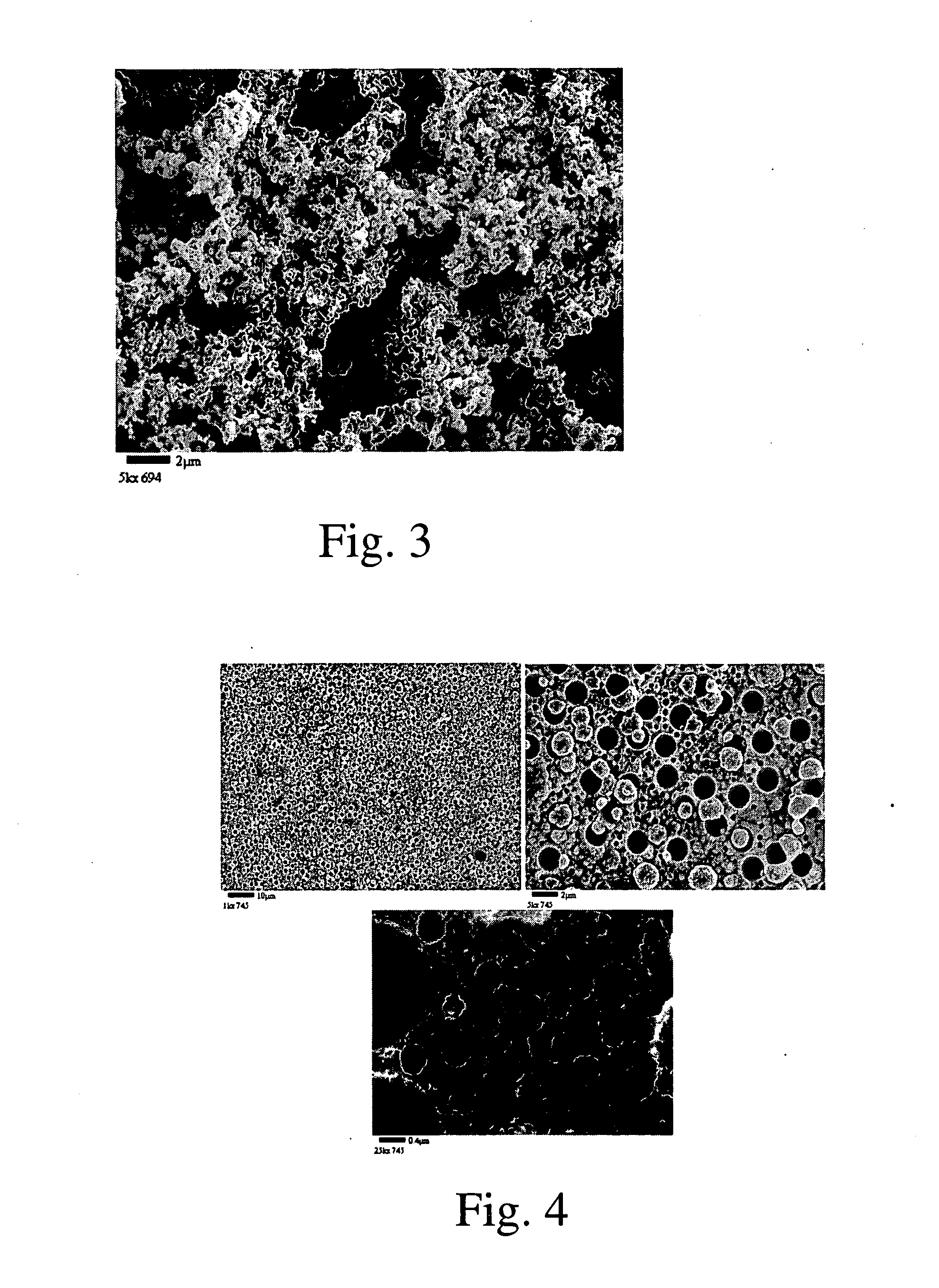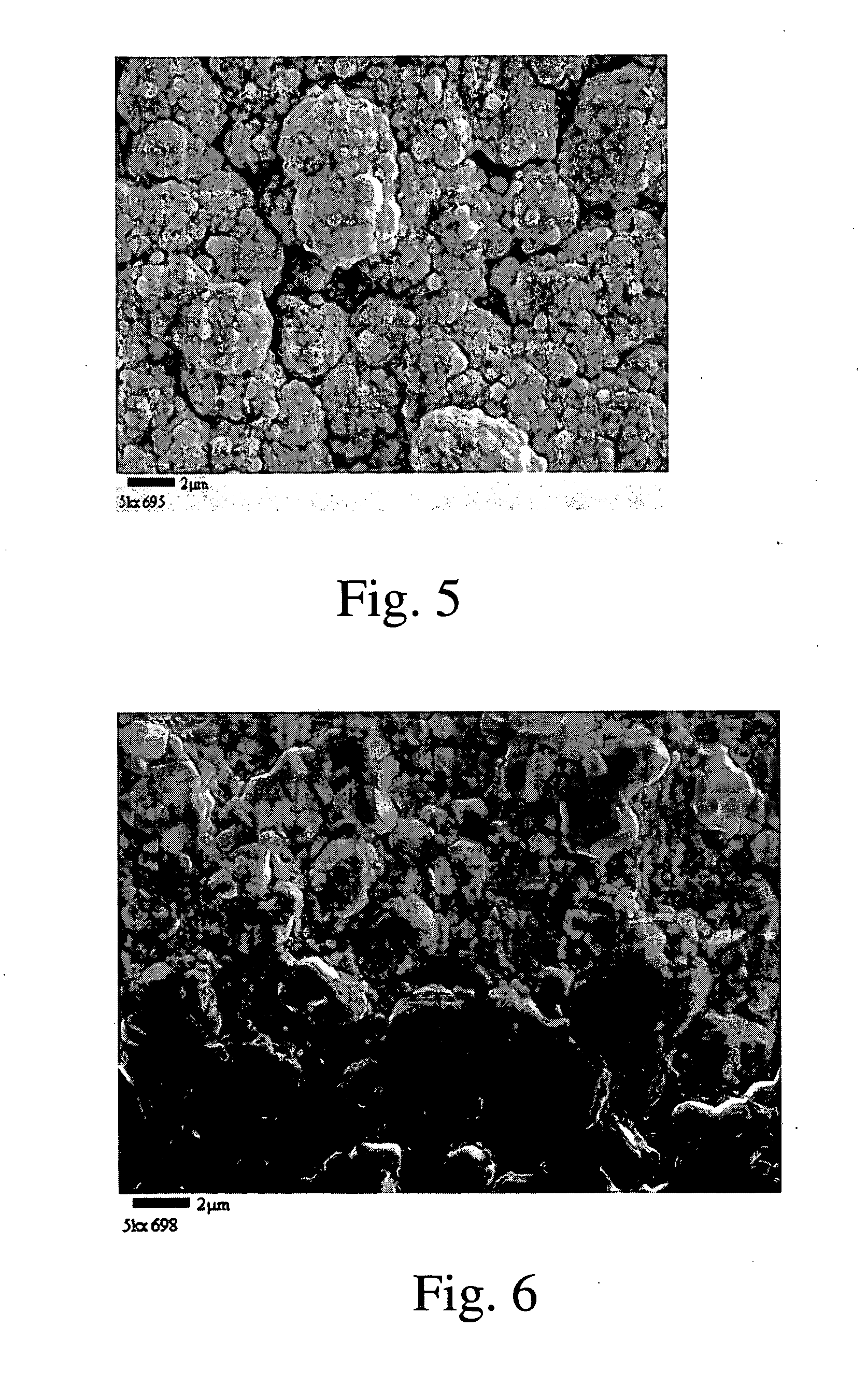Porous Electrolessly Deposited Coatings
a technology of electroless deposited coatings and porous metals, which is applied in the direction of liquid/solution decomposition chemical coatings, cell components, transportation and packaging, etc., can solve the problems of changing the size of pores, and achieve the effects of good thermal conductivity, low sulfer content, and longer reaction channel length
- Summary
- Abstract
- Description
- Claims
- Application Information
AI Technical Summary
Benefits of technology
Problems solved by technology
Method used
Image
Examples
example 1
Reference
[0041]A solution consisting of Pt(NH3)4(OH)2, (0.2 wt % Pt) and 0.2 wt % N2H4.H2O was prepared. An aluminized alloy 617 coupon was heat-treated at 1050° C. for 10 hours before use. The surface of this coupon was covered by an α-Al2O3 scale. The coupon was hung in the solution at room temperature overnight. 11.4 mg / in2 Pt was plated on the coupon. After that, the Pt plated coupon was put in a new Pt plating solution with the same composition for 3 hours. Next the coupon was cleaned and calcined at 500° C. for 1 h in air. The final Pt loading was 15.7 mg / in2. The SEM micrograph shows that the Pt layer is flat and dense (FIG. 1).
example 2
[0042]An aluminized Inconel 617, heat treated and Pt-plated coupon (15 mg / in2 Pt) was coated with 0.11 mg polystyrene microsphere (1.7 μm) and dried at room temperature. Next the coupon was put in a solution consisting of Pt(NH3)4(OH)2, (0.2 wt % Pt) and 0.2 wt % N2H4.H2O for 20 hours at room temperature. The coupon was then cleaned and calcined at 500° C. for 1 h in air. 11 mg / in2 Pt was plated on the coupon. SEM micrograph shows that the surface Pt layer is porous (FIG. 2). Bimodal pores (1.7 μm and 50-100 nm) are observed.
example 3
[0043]An aluminized Inconel 617, heat treated and Pt-plated coupon (15 mg / in2 Pt) was put in a solution consisting of Pt(NH3)4(OH)2, (0.2 wt % Pt), 0.2 wt % N2H4.H2O and 1.0 wt % polystyrene microsphere (1.7 μm) for 20 hours at room temperature. The coupon was then cleaned and calcined at 500° C. for 1 h in air. 12 mg / in2 Pt was plated on the coupon. SEM micrograph shows that the surface Pt layer is very porous (FIG. 3). Pt particle size is in the range of 100 to 200 nm.
PUM
| Property | Measurement | Unit |
|---|---|---|
| pore size | aaaaa | aaaaa |
| size | aaaaa | aaaaa |
| size | aaaaa | aaaaa |
Abstract
Description
Claims
Application Information
 Login to view more
Login to view more - R&D Engineer
- R&D Manager
- IP Professional
- Industry Leading Data Capabilities
- Powerful AI technology
- Patent DNA Extraction
Browse by: Latest US Patents, China's latest patents, Technical Efficacy Thesaurus, Application Domain, Technology Topic.
© 2024 PatSnap. All rights reserved.Legal|Privacy policy|Modern Slavery Act Transparency Statement|Sitemap



